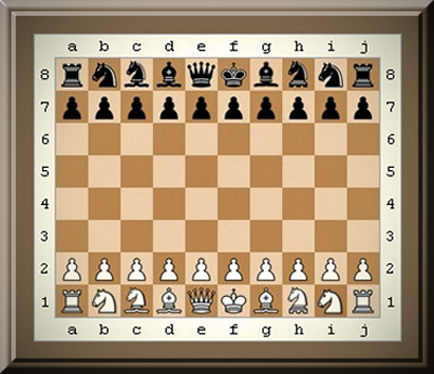|

“Any alteration to the game would abolish centuries of Chess literature”
The game of
Chess is old, no one knows for certain how old. Its
genesis in the first millennium dates back to an era of
which we have only fragmentary knowledge - a rare
document or the remnants of some scattered scripts being
our only evidence. Some researchers in the field have
deduced that the game was invented in India.
A thousand years before this time the Chinese invented a game called 'Go' in which dark and light pebbles kill one another by surrounding each other, hence it is called surrounding Chess. The Go board was modified sometime during the Tang dynasty, (AD 618-907). This alteration made play more complex.
The variant of Chess played in the west is mirrored by the equally playable Xiangqi (Chinese Chess) and Shogi (Japanese Chess).

In the 1920's Capablanca expressed concern that traditional Chess would be eventually played-out, and - do you know what? - he was right! A malaise in the traditional game of Chess prompted a number of leading GMs to voice a need for a reform of the game.
The University of Trinity College, Dublin, applauded Capablancas game (10 x
8 board with new pieces). Some were concerned that any alteration to the game would abolish centuries of Chess literature
(this is also partially correct).
Dr. Tarrasch found it difficult to express his opinion of Capablanca's ideas in parliamentary language!
However, the London Times gave Capablanca's ideas a sympathetic reception. Blanchess was suggested for Capablanca's new form of Chess.
At the time, his suggestions would have invalidated existing knowledge, introduced unfathomable possibilities and increased the chances of making sacrificial combinations in the game of Chess.
Practical suggestions have included:
01. Abolishing castling, (0-0 & 0-0-0).
02. Grade draws.
03. Ballot openings.
04. Use RO+KN, BS+KN, QU+KN, QU+BS etc (combined pieces).
05. Allow the game to commence with the double-move of
Pawn 4 and Pawn 5.
06. Allow the pieces to advance up to three cells on the initial move.
07. Allow two consecutive moves every ten plays.
08. Modify the castling rule.
09. Changing the initial starting position of the pieces.
10. Allowing a minor piece to be promoted to a Bishop or Knight on Rook 7.
11. In the event of a draw (awarding a percentage to each player in accordance with
the value of the
pieces remaining. Queen = 9, Rook = 5, Bishop and Knight = 3 and
Pawn =1 point.)
12. Allowing minor pieces to move horizontally.
13. Allowing a Bishop to alter the colour of the cells it controls (moving from the light
cells to the dark
cells) by a single cell move, of which there is good precedent in
reformation and modern times.
14. Allowing Bishops to jump over pieces on their first
move.
15. Permit the two-cell advance of a Pawn to be exercised at any time on a Pawn
advance to Rook 8.
16. Giving equal powers to the King and Queen.
17. Giving Bishop 1 and/or Bishop 2 the power of a Knight.
18. Giving Queen the added power of a Knight.
19. Replacing Bishop 2 with Queen 2.
20. Giving Rook 2 the added power of a Knight.
21. A player who gives perpetual check, should score 0.0 and the opponent given
0.5.
22. Allowing players to begin a game by making two moves apiece.
23. Giving combined major pieces new names i.e., Squire, Canon, Lord, Archbishop,
Marshall,
Chancellor, Duke etc.
|